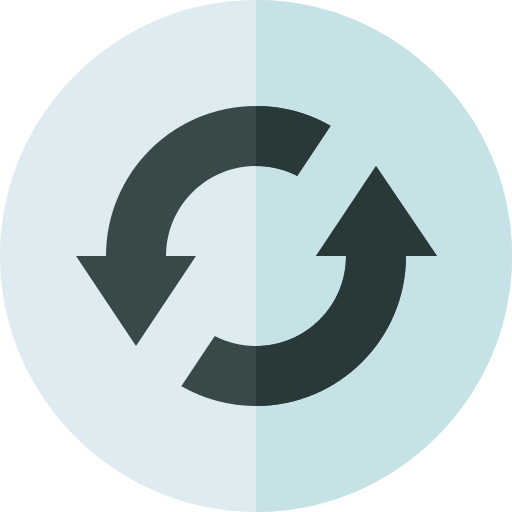Top 5 Cross-Platform Tools Every Mobile Developer Should Use
Do you want to speed up the app development process and reach more audiences on more platforms? The answer lies in building applications that easily run on both Android and iOS.
Developers need to use cross-platform development tools. This allows them to write code once and deploy it across various platforms. These tools are time-saving and help in creating functional apps that meet the needs of different users.
Along with top tools, if you want to know the companies that are excellent at cross-platform development, you can check out this blog on top app development companies. These companies have a proven track record of delivering powerful cross-platform applications.
Let’s discuss the top five cross-platform tools that every mobile developer utilizes.
1. React Native
React Native has become one of the most popular cross-platform frameworks. It allows you to build mobile apps using only JavaScript. It uses the same design as React, which allows you to compose a rich mobile UI from declarative components.
Here are some of the key benefits of using React Native:
- Write Once, Use Anywhere - You can write code once and deploy it to both iOS and Android. This saves a ton of development time.
- Fast Refresh - Makes changes instantly without needing to compile, allowing for faster development.
- Large Community - As one of the most popular options, React Native has a strong community and ecosystem behind it. Finding solutions and libraries is easy.
- Easy localization – If you’re planning to launch globally, adding translations doesn’t have to be a headache. Tools like Tolgee for React localization let you manage languages right inside your project instead of juggling messy external files.
- Code Sharing - Share a majority of your code, business logic and UI between platforms.
- Native Performance - React Native provides nearly identical performance to fully native apps.
React Native is a great choice as a robust cross-platform solution with mature tools and an active community.
2. Flutter
Flutter is Google’s open-source toolkit that builds appealing native apps for iOS and Android from a single Dart codebase. It has quickly gained popularity for its fast development times and expressive UI framework.
Here are some of the advantages of using Flutter:
- Hot Reload - Save time by applying changes instantly without restarting your app. Tweak your code and see results immediately.
- Customizable Widgets - Flutter includes a rich set of customizable UI widgets to help build native interfaces in a fraction of the time.
- Dart Language - Dart is an easy-to-learn language optimized for fast mobile development. Its declarative syntax helps you build UI quickly.
- Excellent Documentation - Flutter has extensive documentation and learning resources to help new developers get up to speed.
- Growing Community - As Flutter adoption spreads, the community keeps getting stronger. Find solutions to issues easily.
If you want blazing-fast development times from a tightly optimized SDK, Flutter is a top choice for cross-platform development in 2024. The hot reload feature accelerates your workflow.
3. Xamarin
Xamarin is a Microsoft-owned framework that allows you to build native iOS, Android and Windows apps using C# and the .NET ecosystem.
Here are some key features of Xamarin:
- Single Language (C#) - Use your existing C# skills to write all of your business logic and share it across platforms.
- Native UI - Xamarin apps render using native controls and UI elements for a feel indistinguishable from Objective-C or Java.
- Mature Tools - Xamarin is integrated with Visual Studio and has a robust set of dev tools like the Xamarin Profiler.
- Extensive Class Libraries - Access native APIs for each platform using .NET libraries.
- Enterprise Focus - Xamarin offers enterprise-level support, security and testing tools.
Xamarin is a great cross-platform solution with extensive enterprise-level tools and support if you want to improve your existing C# skills or .NET code.
4. PhoneGap (Cordova)
PhoneGap is an open-source framework for creating cross-platform mobile apps using HTML, CSS and JavaScript. It wraps your code into native containers to access device APIs on iOS, Android and Windows.
Here are some key advantages of PhoneGap:
- Web Languages - Use your existing web dev skills (HTML, CSS, JavaScript) to build mobile apps.
- Plugins - Access native device features like camera, contacts, sensors etc using plugins.
- Open Source - Free and open source under the Apache license.
- Community Plugins - A large collection of plugins built by the community.
- Beginner Friendly - Lower barrier to entry for new developers.
PhoneGap is a perfect choice for developers who are looking to build cross-platform apps using their existing web development skills.
5. Appcelerator Titanium
Appcelerator Titanium is an open-source framework used to develop native cross-platform apps using JavaScript. It allows you to access native APIs through JavaScript modules and build UI with XML markup and custom CSS.
Here are some of the main advantages of Appcelerator Titanium:
- JavaScript-Based - Use one JavaScript codebase to target multiple platforms.
- Speed - Build apps over 5X faster than native languages thanks to Titanium’s APIs.
- Performance - Native compilation provides great performance compared to alternatives.
- Alloy MVC Framework - Provides structure and speed development.
- Cloud Services - Deploy backend cloud services on Appcelerator Cloud to save time.
Appcelerator Titanium is a great choice for rapid cross-platform development from a single JavaScript codebase.
Factors to Consider When Choosing a Cross-Platform Development Tool
Check out the factors to consider when choosing a cross-platform tool.
1. Project Complexity
- Evaluate the complexity of your mobile app project.
- For mobile developers working within the Microsoft ecosystem, learning how a C# .NET PDF API can standardize document handling and improve functionality offers significant advantages.
- Highly customized UI or access to platform-specific APIs may require tools like Xamarin or Flutter.
- For simpler projects or rapid prototypes, PhoneGap or Appcelerator Titanium may suffice.
2. Developer Skillset
- Consider the expertise of your development team.
- Choose a tool that aligns with your team's skills and experience.
- JavaScript developers may find React Native or PhoneGap accessible, while C# developers may prefer Xamarin.
3. Performance Requirements
- Assess the performance needs of your app.
- React Native and Flutter provide near-native performance.
- Xamarin, with its platform-specific optimizations, is also suitable for performance-critical applications.
4. Community and Ecosystem
- Evaluate the strength of the tool's community and ecosystem.
- Larger communities, such as those of React Native and Flutter, offer extensive resources and support.
5. Platform Support
- Consider the platforms you plan to target.
- Some tools, like Flutter, support not only Android and iOS but also web and desktop platforms.
- Broader platform support can be advantageous for future expansion.
6. Cost and Licensing
- Factor in the cost associated with each tool.
- React Native and Flutter are open-source with no licensing fees.
- Xamarin may have licensing fees for certain features or deployment options.
7. User Interface (UI) Requirements
- Assess your app's UI requirements.
- If you need a highly customized and platform-specific UI, tools like Flutter and Xamarin provide flexibility.
- For a consistent UI across platforms, React Native's component-based approach may be a better fit.
8. Long-Term Maintenance
- Consider the long-term maintenance and scalability of your app.
- Choose a tool with a track record of regular updates and alignment with the latest platform changes.
- React Native and Xamarin, backed by major corporations (Facebook and Microsoft), provide reliability.
9. Testing and Debugging
- Examine the testing and debugging capabilities of each tool.
- Features like hot reload (Flutter) and live reload (React Native) expedite debugging and enhance development productivity.
In addition to considering all of these factors, one major concern for developers is ensuring mobile app security.
As you learn about these cross-platform development tools, it’s important to integrate best practices for security. To learn more, check out this blog on tips for developers to ensure mobile app security.
Conclusion
Cross-platform mobile development is crucial for delivering apps efficiently across iOS, Android, and other platforms. You have amazing options like React Native, Flutter, Xamarin, PhoneGap, and Appcelerator Titanium for building high-quality native apps from shared code.
Which framework is right for you depends on your team’s skills, resources and what mix of native capability and code sharing you need. React Native offers a nice middle ground, while Flutter emphasizes hot reload productivity.
Xamarin is great for C# shops and enterprises. For web developers, PhoneGap allows you to reuse HTML and JavaScript skills. And Appcelerator Titanium accelerates development using JavaScript and XML.
By selecting the right cross-platform technology, you can assemble code that targets iOS, Android and more from a single codebase. This saves you huge amounts of development time and resources.
Focus more on creating a stunning user experience instead of building platforms separately. With a talented mobile team and the right tools, you can build beautiful, high-performance apps that delight users across all devices.



